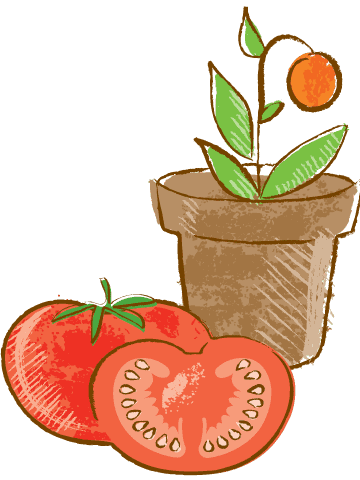Cooking fresh meals can be a challenge for any family — and especially for those without easy access to basics like fresh produce, a grocery store, or even a kitchen.
Such is the reality for many families served by Orlando Day Nursery, a nonprofit child care center established in 1921. With no major grocery stores in the area, there is limited access to fresh, healthy ingredients.
“In the neighborhood, we have a few little convenience stores, fast food, and some ‘greasy spoon’ cafés, and that’s about it,” explains Executive Director Mata Dennis.
The Orlando Day Nursery’s school garden was especially created for kids ages 2-6 (the school’s total enrollment includes infancy through kindergarten). A major goal of the program is to help families overcome some of these barriers, through several home and community extension projects.
Extra vegetables and fruits harvested at school are sent home to families on a regular basis. And students have the option to take home a complete container garden made with 5-gallon buckets donated by a local Home Depot. The school provides everything a family needs to start a small crop of vegetables at home.
“Most of our families don’t have room for a garden, and some don’t have any outdoor space at home,” Mata says. “So we get buckets donated from Home Depot, drill holes in the bottom, fill them with soil and rocks, and give the families something to plant in it.”
During the 2016-17 school year, several homeless families in the community also were invited to “adopt” a garden bed so they could grow some of their own food. The school provided supplies and equipment; participating families tended their own crops.
All of these efforts have helped to engage parents and entire families, and get them to try some new foods. Orlando Day Nursery also serves meals during the school day, and the garden has had a direct impact on the way the students eat.
“The food from our garden is used for classroom cooking activities and for lunch salads prepared in our kitchen,” Mata says. “Before we started the garden, most of our children did not eat green vegetables or salads. Their main vegetable was potatoes. Previously, even when we tried adding more green vegetables to the lunches, they just wouldn’t eat it. But once the kids started growing the vegetables, they started eating them. Now we go through lots of broccoli. On salad days, it’s impossible to keep enough on hand — the staff is often disappointed that the salad runs out because the kids ate it all!”
“The food from our garden is used for classroom cooking activities and for lunch salads prepared in our kitchen.”
When choosing what foods to grow, they try to stick to familiar veggies and fruits, or healthy ingredients that can be easily incorporated into recipes most of the families already enjoy. Favorites have been collard greens, kale, lettuces, tomatoes, cucumbers, papaya, pineapple, strawberries and fresh herbs.
“The families love it when we send home salad fixings,” Mata says. “Green beans and summer squash are popular. This year, we grew a type of red bean, similar to a kidney bean, and those were well received.”
Working with such a young age group represents an opportunity to foster healthy eating lessons early, when they’re more likely to stick, though it also can be tricky at times.
With the youngest set, teachers find it works best to invite them to the garden in very small groups. A high adult: kid ratio makes garden time more rewarding and successful. Two-year-olds love to plant seeds or help with digging holes and transplanting. They love to explore and touch the plants, they enjoy watering every day, and they can help with harvesting — though they usually want to eat everything right on the spot.
“For the 3-and 4-year-olds, we have little watering cans. We also have rain barrels [with spouts] the kids can use to fill their watering cans,” Mata says. “This age group is generally easy to work with, and eager. They’re great at harvesting. We give them safe tools, like plastic knives or small cutters. When they see something to pick, they get very excited. We talk a lot about waiting until it’s big enough to harvest.”
By kindergarten, the kids have had lots of experience with gardening basics, and their knowledge makes them more productive: pulling weeds, digging holes, raking, fertilizing, managing the compost bin and more.
Watching the progression as kids grow comfortable with gardening and eating fresh foods is the greatest reward. They carry their gardening skills along to elementary school, and their new attitudes about food hopefully will last a lifetime.
“People relate best to what they already know,” Mata says. “Most kids arrive here only familiar with hamburgers, hot dogs, chicken nuggets, French fries. The garden really improves their willingness to try different things. When they leave, salad and broccoli are just as familiar.”



